Most days I look at dozens, maybe hundreds of photographs, but I often look so quickly and superficially that it’s like I’m not really looking at all. The problem is especially acute when viewing photographs onscreen or online. Websites like Flickr and Instagram give us instant, easy access to billions of photographs, but also play havoc with our attention span.
The Experiment
Is there an antidote? Perhaps. In this post, I suggest a simple experiment. If you have ten minutes to spare – which is how long it takes to do the experiment – I encourage you to try it, not least because I’m curious to know what effect it has.
The exercise is simple. I’ve chosen five photographs – not by me, but by photographers whose work I admire (and with their kind permission). All these pictures, I believe, are worthy of extended contemplation. My suggestion is to spend two minutes just looking at each photograph, and see what emerges. Then move on to the next image, and repeat. Five photographs, ten minutes.
In the next section, I outline the purpose of the experiment. Personally, I think the theory is interesting, but if you’re impatient or busy, you can skip to the Photographs section which comes after. Even if you choose not to do the experiment, the photographs are well worth looking at.
The Theory
Betty Edwards on drawing
Besides photography, I’m also interested in drawing and psychology, and I was recently reading a book which combines the two: Drawing on the Right Side of the Brain by Betty Edwards. First published in 1979 and now in its fourth edition, this popular and influential book draws on research by Nobel Prize-winning neuropsychologist Roger W Sperry on the lateralization of brain function.
“What’s this got to do with photography?” you ask. To which I say, “Be patient. What did I just say about attention span?”
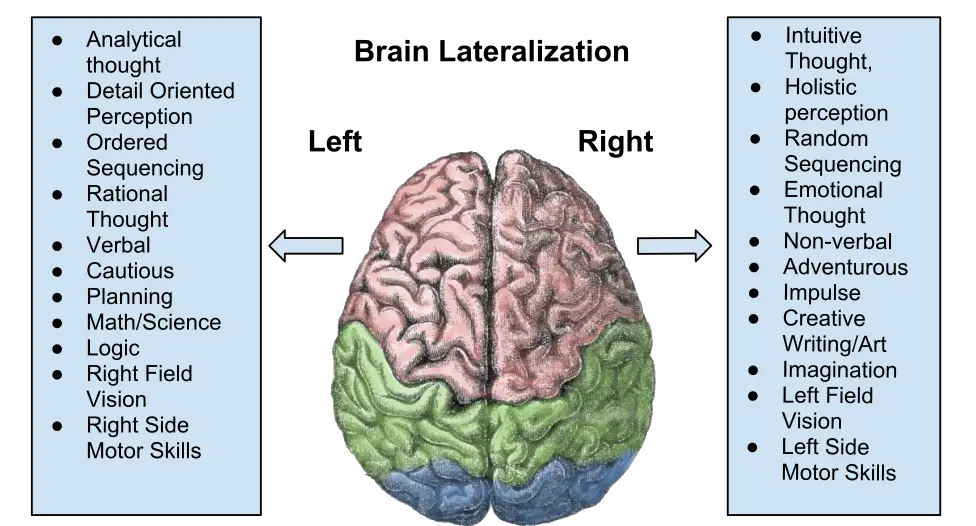
The basic theory – I’m greatly simplifying here, and I’m not an expert by any stretch – is that the left half of the brain is predominantly verbal (dealing in words), analytic and linear, while the right half is predominantly visual, perceptual and spatial. This is true for most individuals, not all, so Edwards refers to these two modes of functioning as L-mode and R-mode, no matter where they are located in the individual brain.
In general, L-mode dominates. Impatient with slower, more complex R-mode processing, L-mode tends to rush in and interfere with tasks – even tasks which R-mode is better suited for. When I see a photograph of a leaf, the verbal L-mode jumps in to name it: “It’s a leaf. Let’s move on.” If I try to look more carefully – I’m paraphrasing Edwards – L-mode grows increasingly impatient: “I’ve already named it – it’s a leaf, I tell you. They’re all alike. Why bother with all this looking?”
Edwards argues that we can get better at drawing – and I believe this also applies to looking at photographs – if we can access the more silent and reclusive R-mode. Her strategy is simple but ingenious: present the brain with a task which the left brain will turn down.
Apparently there are certain tasks which L-mode can’t or won’t do, because it finds them too slow, detailed, complex or simply boring. Accordingly, Edwards suggests drawing exercises which cause L-mode to “tap out” – tasks like copying the wrinkles on a crumpled piece of paper, drawing negative spaces, or copying an upside-down drawing.
Mike Johnston on reading photo-books
The Betty Edwards book made me think of a post I read a while back on The Online Photographer, popularly known as TOP (Mike Johnston, the man behind TOP, also came up with OCOLOY, and introduced the word bokeh to the English-speaking world). You can read the full post here, but I’ll quote two passages which are especially relevant:
Closure is what happens when you think you understand something well enough, and don’t think you need to understand it any better—so you stop trying … Unfortunately, photographs are among the things we reach closure on the fastest of anything … Advertising photographs, which are often designed to be slick but simplistic—the better to be immediately appealing—are designed to be “gotten” quickly and easily. And of course many images don’t deserve extended attention. All of this conspires to encourage our habits of early, often instant, closure. Like it or not, we can hardly help approaching pictures that way: scanning, appraising, closing down, moving on.
By the way, I think “designed to be immediately appealing” is a good descriptor of many Instagram photos too.
Mike’s post is about how to read a photo-book which you really want to digest. His remedy is to get an egg timer that counts off three minutes:
What you do is to use the egg timer to help you spend time looking at each picture … During that time, let your eyes stay on the picture. Your mind can wander if you want, but keep looking at the picture. After the time is up, turn the page.
Keep at this as long as you want to, he says, then put the book back on the shelf and come back to it later.
The gambit, I think, is similar to what Betty Edwards proposes. Let L-mode do it’s thing – “It’s a picture of two boxers on a beach.” “It’s a forest.” Resist the impulse to move on, and calmly keep looking. After a while, L-mode checks out, and we start to see the image in an R-mode way: shapes and textures rather than things with names – and drawing not just on analysis and reason, but on imagination, emotion and memory.
Of course, it’s not feasible to look at all images in this way. Besides, as Mike says, not all images deserve extended attention. But it’s an interesting psychological exercise, and when I tried it, it led me to a better appreciation and understanding of photographs. In this post, I propose that you try it too.
The Photographs
In this section I present five photographs which I admire, along with some basic information. I suggest looking at each image for two minutes (Mike suggested three, but I’m going easy since these are online images).
I should warn you that two minutes per image – ten minutes in total – doesn’t sound like much, but if you’re anything like me, you may well struggle to stay focused. As Betty Edwards says, “the left hemisphere is the Great Saboteur of endeavors in art.” But try not to jump to the next image, open a new tab or check your phone. If your mind wanders, which it probably will, don’t stress – keep calm and carry on looking. In Buddhist meditation they say, “return to the breath”; in this case, return to the picture.
Now if you’d like to try the experiment:
- There’s a two-minute timer below each image. Start the timer. With your volume up, you’ll hear four beeps at the start, and four beeps at the end; silence in between.
- To minimize distractions, I suggest opening the image in a new tab (on Chrome, right-click – or long-press on mobile – and “Open image in new tab”). Press F11 on Windows to enter full-screen (even fewer distractions).
- Spend two minutes just looking at the photograph.
- When two minutes are up, move on to the next image, and repeat.
Boxers Training on the Beach
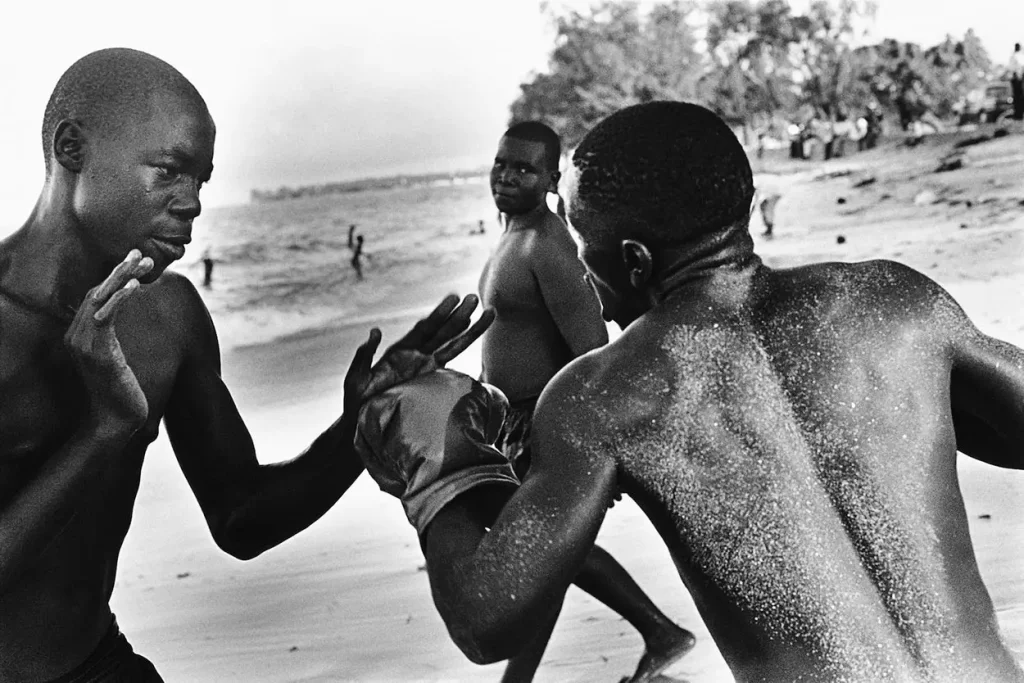
“Boxers Training on the Beach” by Pierre Crocquet (courtesy of Jeannine du Venage)
Dar es Salaam, Tanzania (2002)
Nikon FM, Kodak Tri-X 400 film
Website | Instagram | Facebook
it felt like home…
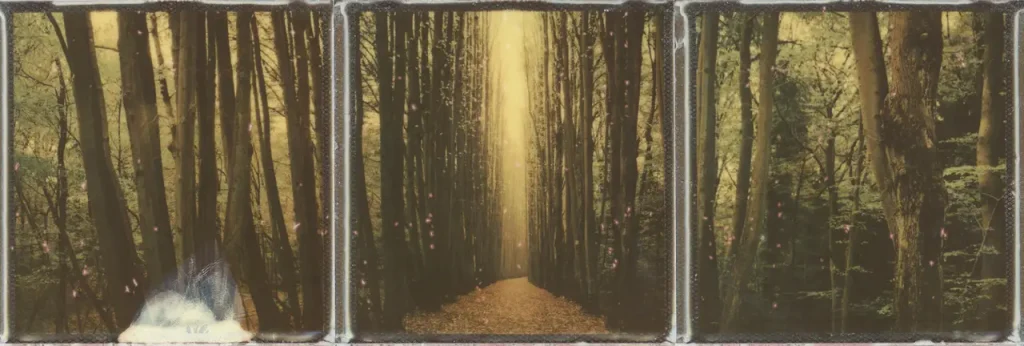
“it felt like home…” by Ina Echternach
Siebengebirge Nature Park, Germany (2014)
Polaroid SLR680, Impossible Project 600 Color Film (2.0 beta)
Website | Instagram
The Lovely Ms Sinclair
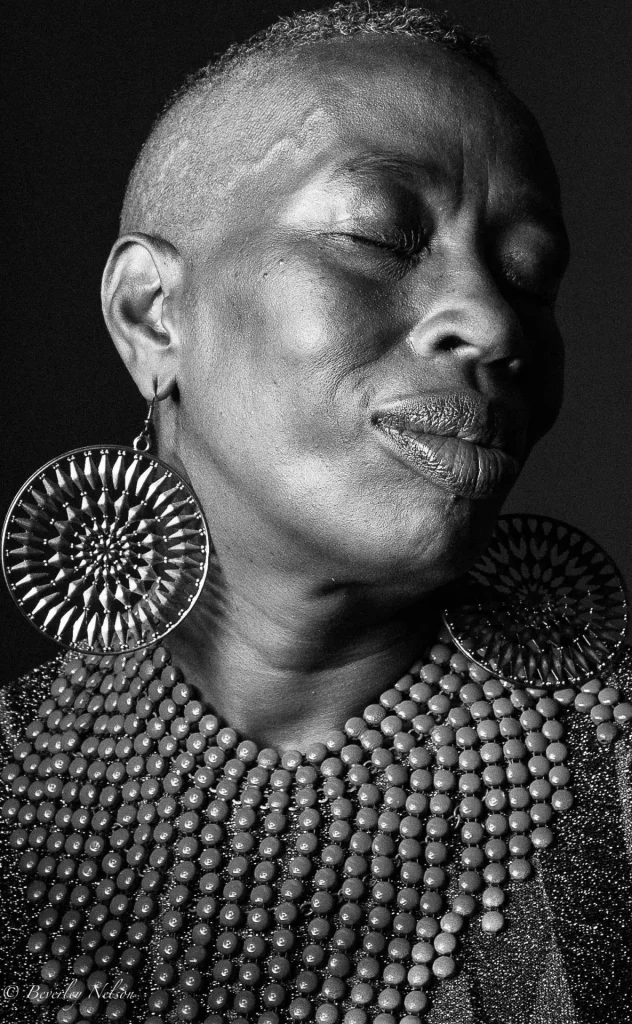
“The Lovely Ms Sinclair” by Beverley Nelson
London, UK (2018)
Canon EOS 70D
Model: Beverley Sinclair
Instagram | Instagram
Bhoot Chaturdashi
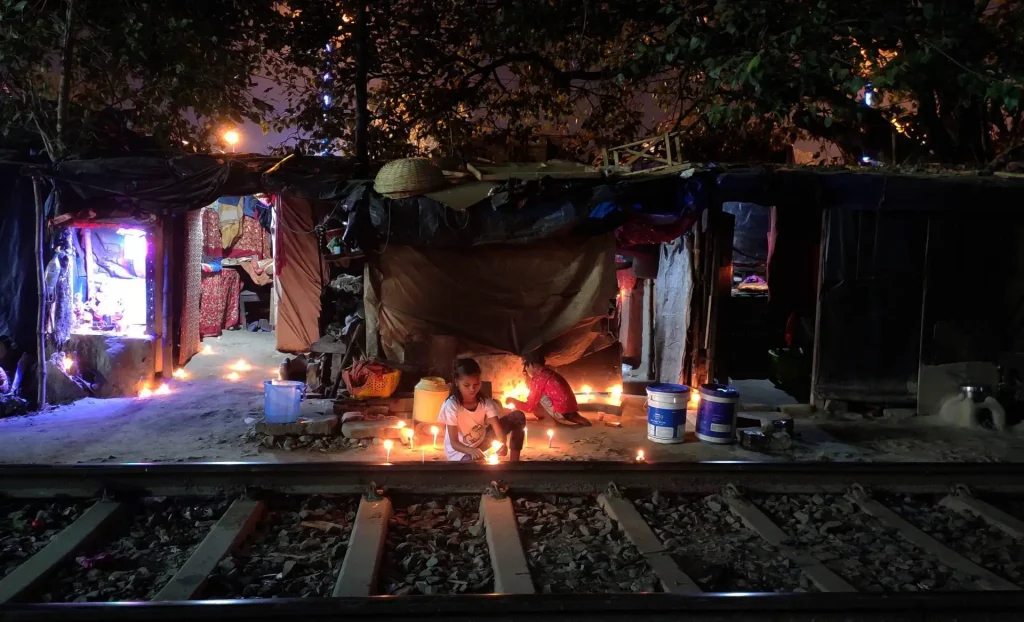
“Bhoot Chaturdashi” by Parameshwar Halder
Kolkata, India (2020)
Redmi Note 7 Pro
Instagram
(In Bengal, Bhoot Chaturdashi is the night before Kali Puja/Diwali, when candles are lit to ward off evil spirits.)
Catching Flies
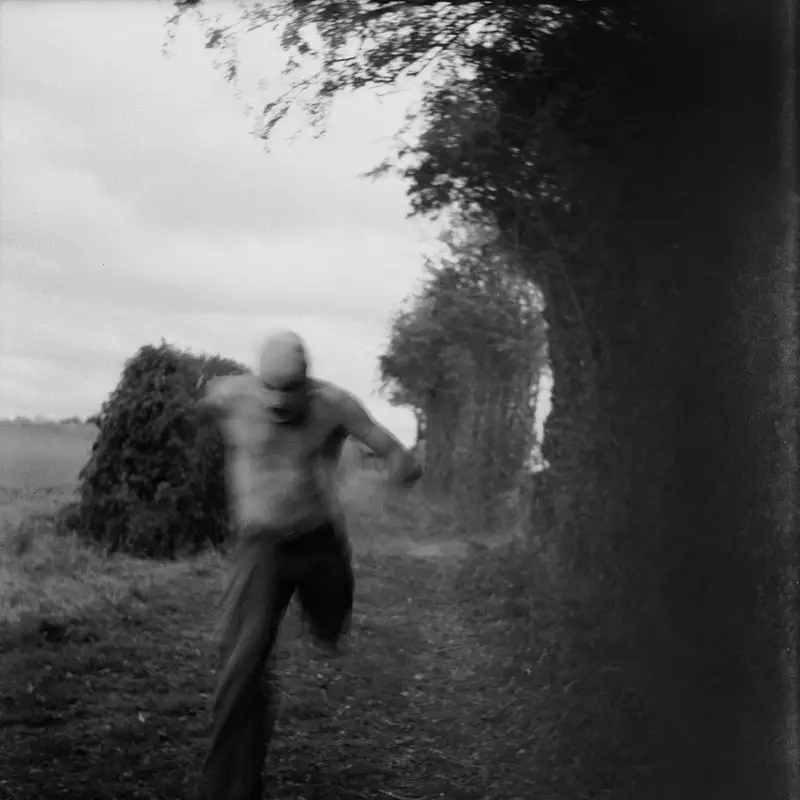
“Catching Flies” by Mariya Ustymenko
St Osyth, UK (2011)
Lubitel-2, Fomapan 100 film
Website
Thoughts?
If you tried the experiment (and can spare a few more minutes to comment), I’m very interested to hear your thoughts. Did you find it worthwhile? Was it easy or hard? What kinds of things did you notice? Did the images stir up any emotions or memories?
If you didn’t try the experiment or gave up midway, I’d be interested to hear from you too.
Finally, my heartfelt thanks to the photographers featured in this post (as well as Jeannine du Venage, who inherited Pierre Crocquet’s negatives) for letting me share their images and answering all my questions. My only photographic contribution to this post is the header image, but you can see more on my Instagram.
Share this post:
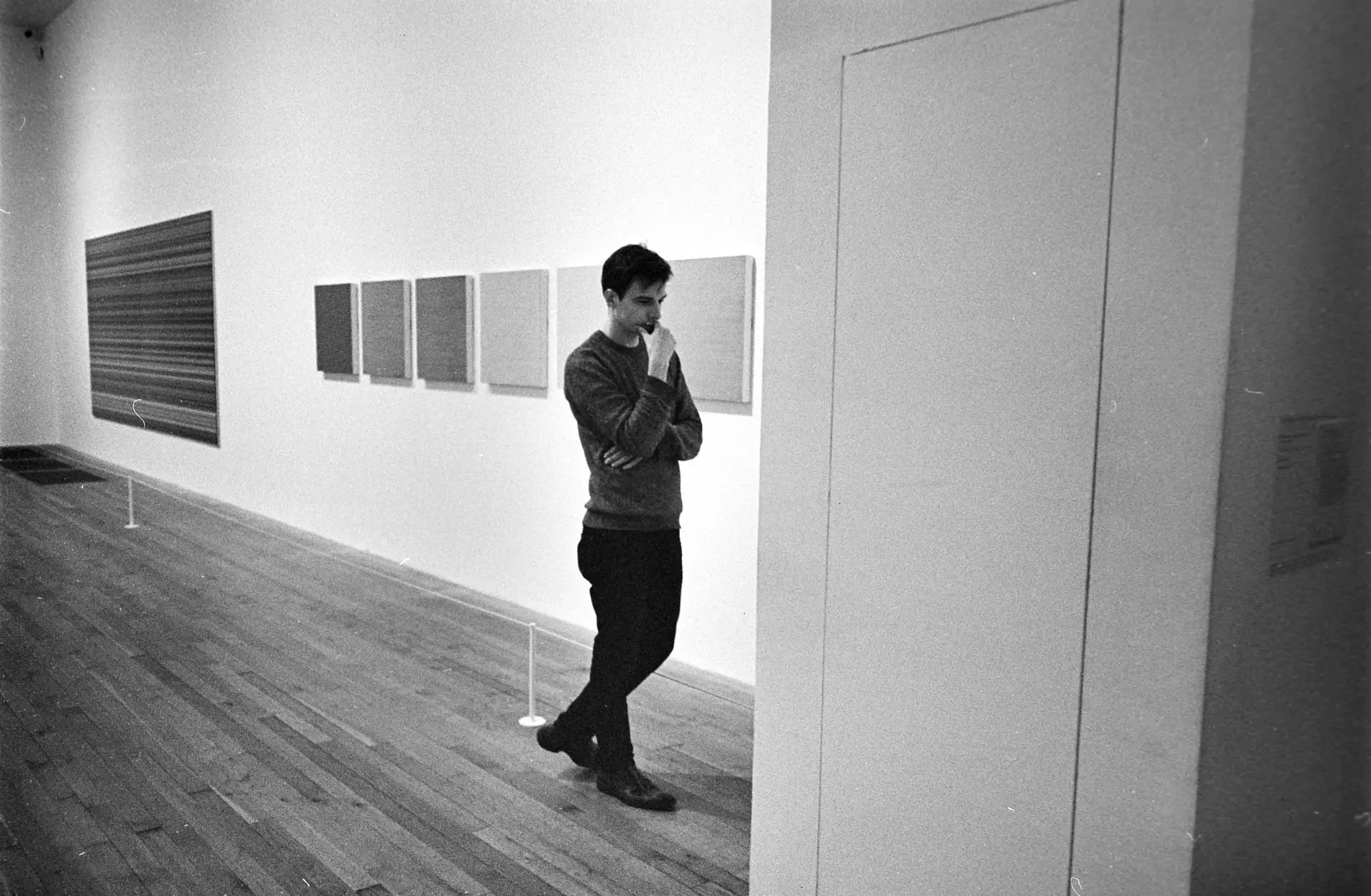








Comments
Bob on An Experiment in Looking at Photographs – by Sroyon
Comment posted: 22/02/2021
The black and white photos that I spent a long time looking at, and enjoying, were Ron McCormick ‘How Green Was My Valley’ taken in the 1970s of South Wales valleys.
The colour photos that I can’t stop looking at are ones taken by Saul Leiter, mostly taken in New York, and classic street photography in the early days of colour photography.
Perhaps the best well known that grab my attention and can spend age looking at are by Vivian Maier.
Analysing it’s probably looking back at the passage of time, the dress, cars, people, streets, subjects, that get the mind wondering what it was like back then and what became of the people or how things have changed.
Comment posted: 22/02/2021
Comment posted: 22/02/2021
Comment posted: 22/02/2021
Jeff on An Experiment in Looking at Photographs – by Sroyon
Comment posted: 22/02/2021
I’m going to try and produce more images that have both of these qualities, the Instagram left brain hit plus the enduring quality of the right brain image. Maybe that is what I am doing when I shoot film – costs a bit of money when I hit the shutter button so I slow down and look. From now on I’ll look for 2 minutes minimum before pressing the shutter button!
Comment posted: 22/02/2021
Joe Van Cleave on An Experiment in Looking at Photographs – by Sroyon
Comment posted: 22/02/2021
The pop-up ads make landscape mode essentially useless, while portrait mode makes landscape-oriented images too small to study in-depth, unless your mobile device is iPad-sized. And in Reader Mode you lose the pop-up ads but also the images entirely.
I understand the economics of ad revenue to support this site, but your website template makes enjoying these articles in depth to be sub-optimal.
That said, this was a great visual exercise, and thank you to Sroyon for re-reminding me about Drawing on the Right Side of the Brain.
Comment posted: 22/02/2021
Comment posted: 22/02/2021
Comment posted: 22/02/2021
Bob Janes on An Experiment in Looking at Photographs – by Sroyon
Comment posted: 22/02/2021
I did find myself comparing and contrasting to other images in the series though, so I guess I wasn't quite fully engaged (at least at times).
I've not read the other comments before writing this, so I'm not sure if I'm on track with others or not.
For the first image I spent quite a long time trying to work out why the photo worked (given that the central subject's face was not visible and the whole picture was way off level - I came to the conclusion that the eye was constantly led to the figure on the left, who was in an odd position compositionally. I think that photo was successful because it was disturbing. Same (ie successful because it is slightly disturbing) probably goes for the figure running towards the camera in the last photo. My favourite image was the portrait, because the subject was so engaging and the lighting was very good (although I guess that the closed eyes were not totally conventional).
Comment posted: 22/02/2021
Comment posted: 22/02/2021
Comment posted: 22/02/2021
Comment posted: 22/02/2021
Jeannine du Venage on An Experiment in Looking at Photographs – by Sroyon
Comment posted: 22/02/2021
I'm now going to do the other four!
Comment posted: 22/02/2021
David Dyer-Bennet on An Experiment in Looking at Photographs – by Sroyon
Comment posted: 22/02/2021
Forcing extended viewing is kind of dangerous for me--where my head goes is identifying flaws, and if it gets really bad I start counting things. Now, identifying flaws isn't all bad, especially if you can also assess how *serious* any given flaw is (in my opinion, I mean; no claim to be the universal perfect critic!). But it's a suspect way to approach a new photo; I feel it's better to approach with some sort of open hopefulness, and see where the photo leads you.
I've been casually interested in brain lateralization studies forever, since I'm a right-handed left-eyed photographer who hardly does images in my head at all; my head is all words. (Also a mathematician with a higher verbal SAT than math).
On this old laptop, I had to click through to the photo alone to see it all on the screen (it was taller than my screen, but when I click through to just the photo, Firefox resizes it to fit), and that lost the timer. I coped, but just mentioning it.
Comment posted: 22/02/2021
Rob Spring on An Experiment in Looking at Photographs – by Sroyon
Comment posted: 22/02/2021
Comment posted: 22/02/2021
Patrick Marren on An Experiment in Looking at Photographs – by Sroyon
Comment posted: 22/02/2021
Comment posted: 22/02/2021
Bill Brown on An Experiment in Looking at Photographs – by Sroyon
Comment posted: 22/02/2021
I photographed a stairwell over an eight year period. Towards the latter part of that project my emphasis moved from shapes and patterns towards how to disrupt spatial cues that the eye/ brain uses to determine what was being photographed as well as each objects location/depth in the photograph. I think having insight into how we view the world around us can impact what we point our camera towards and why.
Each person brings a different history to their viewing experience so I don't believe there is necessarily a right, wrong or better way to view photographs or art in general. Specific knowledge can enhance a viewers experience but at the same time when a viewer is able to lay their own past experiences over a photograph a deeper connection may be achieved. Those personal connections may not be anywhere near what the photographer was intending. Does this mean that the viewer didn't get it?
I'm a detail person so the "The Lovely Ms Sinclair" was easy to linger on for two minutes. "Boxers Training on the Beach" was second. Thanks for shedding some light on the who and why of us as individuals not just photographers. On a final note I would say that the titles influenced my acceptance of each image as much or more than the content.
Comment posted: 22/02/2021
Comment posted: 22/02/2021
Comment posted: 22/02/2021
Michael Matthews on An Experiment in Looking at Photographs – by Sroyon
Comment posted: 22/02/2021
Comment posted: 22/02/2021
Omer on An Experiment in Looking at Photographs – by Sroyon
Comment posted: 22/02/2021
If that is true, it confirms a behavior I’ve seen when visiting an art gallery; I have noticed viewers linger longer at images that were ephemeral than those with detail, even if the detailed images were surreal. It was exactly what I did here.
Comment posted: 22/02/2021
David Hume on An Experiment in Looking at Photographs – by Sroyon
Comment posted: 22/02/2021
I did try the Betty Edwards thing back in the 80s when it was pretty trendy and it did not really work for me, but I’m pretty heavily left handed anyway. But certainly worth considering. I do think we can train ourselves to have a more sensitive aesthetic sense - and it’s a lifetime’s work (but worthwhile IMHO.) All strength to your arm.
Comment posted: 22/02/2021
Comment posted: 22/02/2021
c.d.embrey on An Experiment in Looking at Photographs – by Sroyon
Comment posted: 22/02/2021
For which he should be castigated.
Comment posted: 22/02/2021
Merle Hall on An Experiment in Looking at Photographs – by Sroyon
Comment posted: 23/02/2021
Comment posted: 23/02/2021
Sumanta Mukherjee on An Experiment in Looking at Photographs – by Sroyon
Comment posted: 23/02/2021
Enjoyed the 10 minutes! I am habituated to look at images for long and coming back to one if my R brain found it interesting. I never knowingly restricted my self for two minutes per image till now though. TOP is my favourite site to go to everyday, so am happy Mike is getting mentioned here.
All these 5 images created one common thing on me, I became more aware of those images without being attached to its data. I stopped thinking them as image OF a situation, rather I started considering them images FROM a situation. It is I believe, is very important for any image maker and viewer to do if the goal is to walk away from data based document called a photograph.
So, the person in catching flies, boxers in the other, the child beside rail track, trees separated by frame then spoke to me. Actually I was speaking to myself on how I am writing my own story from images.
And, I am sure, whenever will I comeback seeing any of these 5 images again, my story will be different then. That is the utmost joy of seeing.
Because of many cameras, situations, images, paintings, websites including TOP ( Mike), I have now learned to see by the right brain... I want to continue doing that till I die.
Sumanta
Comment posted: 23/02/2021
Joris on An Experiment in Looking at Photographs – by Sroyon
Comment posted: 23/02/2021
I have been struggling massively with anxiety and with concentration problems, and I thought this would give me a bigger challenge than it did. Only at the last picture did I start drifting away, and axtually getting anxious. It might be the nature of the photo, not just the look of classic horror but also the lack of detail and information to focus on. It actually made me feel anxious. That might just because it was the last photo, and my attention was stretching thin.
I spent some extra time looking at the fourth photo, from Halder, and I kept seeing new things. To be honest, I'm not sure I'm completely finished looking at that photo, yet. Only at the end did I see the other lights on the pathway to the left. Or the little bridge on the rooftops.
It also seems to be easier focusing on pictures with people, and facial expressions. You can try to read the person.
And finally, Ido enjoy looking at these with a photographer's eye, as far as I have developed one over the past year. Recognising techniques and skills that I now share with the photographers, but even more seeing the ones that are well beyond me.
Comment posted: 23/02/2021
Chris Bertram on An Experiment in Looking at Photographs – by Sroyon
Comment posted: 23/02/2021
Comment posted: 23/02/2021
Philip Martin on An Experiment in Looking at Photographs – by Sroyon
Comment posted: 23/02/2021
Comment posted: 23/02/2021
Comment posted: 23/02/2021
Comment posted: 23/02/2021
Comment posted: 23/02/2021
Gary Vivian on An Experiment in Looking at Photographs – by Sroyon
Comment posted: 23/02/2021
Comment posted: 23/02/2021
lilbuddha on An Experiment in Looking at Photographs – by Sroyon
Comment posted: 24/02/2021
Even when you weed out the more casual viewers, those with greater interest still bring a variety of levels of understanding, meaning extended contemplation is less valuable to many.
Comment posted: 24/02/2021
Jon on An Experiment in Looking at Photographs – by Sroyon
Comment posted: 25/02/2021
What I have come to realize is that the mass of images available online has trained me to flick over them unless something grabs me. That is why I hardly spend any time on Instagram, Flickr, etc. and prefer to look at galleries put up by photographers since they have at least attempted to curate properly.
Comment posted: 25/02/2021
Mark B on An Experiment in Looking at Photographs – by Sroyon
Comment posted: 25/02/2021
Comment posted: 25/02/2021
Keith W on An Experiment in Looking at Photographs – by Sroyon
Comment posted: 25/02/2021
I found this a hugely interesting and enjoyable experience. Indeed, I got so lost in the Ina Echternach images that no time seemed to have passed when the timer sounded. Returning to it afterwards, I spent over 5 minutes on them before becoming even vaguely aware of the "outside world".
In contrast to your comments, I try to bring nothing of myself to an image. Approaching it as I would a novel, looking just to go along with what it offers up, I try to see what the image is perhaps really about. I guess it's that old Taoist idea that all people/objects/experiences are three things i.e. what we think they are, what others think they are and what they really are. This of course takes time, so thank you for reminding me to slow down!
Comment posted: 25/02/2021
Bill Thoo on An Experiment in Looking at Photographs – by Sroyon
Comment posted: 25/02/2021
Comment posted: 25/02/2021
James Meeks on An Experiment in Looking at Photographs – by Sroyon
Comment posted: 26/02/2021
Comment posted: 26/02/2021
Daniel Stevenson on An Experiment in Looking at Photographs – by Sroyon
Comment posted: 01/03/2021
As a comment I feel Mike was right, I didn't feel as if two minutes was adequate, but it was certainly a good introduction. I'll read Mike's post as well to glean some of his insights.
Again, thank you. This was certainly out of the normal for many of the posts I read on this website. and I appreciate you for bringing something new to the table.
Comment posted: 01/03/2021
Clay Swatzell on An Experiment in Looking at Photographs – by Sroyon
Comment posted: 27/11/2021
Comment posted: 27/11/2021
Ross Samson on An Experiment in Looking at Photographs – by Sroyon
Comment posted: 23/02/2025
I did struggle to last the full 2 minutes on each image (the timers weren't working, but I am certain that I failed). Part of the time I spent trying to work out if there was a "secret" hidden in the images or a hidden connection between them. (I wondered if there was a left-brain, right-brain secret.) Otherwise, I mostly wondered what the photographer was possibly trying to achieve or whether I liked the image. (I really liked the last one.) I'm not sure that I am any good at looking at photographs!
Comment posted: 23/02/2025